In an old hunting lodge on the grounds of an ancient Norman castle in Abergavenny, Wales, a small, extinct dog peers out of a handmade wooden display case.
"Whiskey is the last surviving specimen of a turnspit dog, albeit stuffed," says Sally Davis, longtime custodian at the Abergavenny Museum.
The Canis vertigus, or turnspit, was an essential part of every large kitchen in Britain in the 16th century. The small cooking canine was bred to run in a wheel that turned a roasting spit in cavernous kitchen fireplaces.
"Whiskey," a taxidermied turnspit dog on display at the Abergavenny Museum in Wales. The Kitchen Sisters"They were referred to as the kitchen dog, the cooking dog or the vernepator cur," says Caira Farrell, library and collections manager at the Kennel Club in London. "The very first mention of them is in 1576 in the first book on dogs ever written."
The turnspit was bred especially to run on a wheel that turned meat so it would cook evenly. And that's how the turnspit got its other name: vernepator cur, Latin for "the dog that turns the wheel."
Back in the 16th century, many people preferred to cook meat over an open fire. Open-fire roasting required constant attention from the cook and constant turning of the spit.
"Since medieval times, the British have delighted in eating roast beef, roast pork, roast turkey," says Jan Bondeson, author of Amazing Dogs, a Cabinet of Canine Curiosities, the book that first led us to the turnspit dog. "They sneered at the idea of roasting meat in an oven. For a true Briton, the proper way was to spit roast it in front of an open fire, using a turnspit dog."
When any meat was to be roasted, one of these dogs was hoisted into a wooden wheel mounted on the wall near the fireplace. The wheel was attached to a chain, which ran down to the spit. As the dog ran, like a hamster in a cage, the spit turned.
"Turnspit dogs were viewed as kitchen utensils, as pieces of machinery rather than as dogs," says Bondeson. "The roar of the fire. The clanking of the spit. The patter from the little dog's feet. The wheels were put up quite high on the wall, far from the fire in order for the dogs not to overheat and faint."
To train the dog to run faster, a glowing coal was thrown into the wheel, Bondeson adds.
In 1750 there were turnspits everywhere. By 1850 they had become scarce, and by 1900 they had disappeared. Universal History Archive/Getty ImagesDescriptions of the dogs paint a rather mutty picture: small, low-bodied, short, crooked front legs, with a heavy head and drooping ears. Some had gray and white fur; others were black or reddish brown. The dogs were strong and sturdy, capable of working for hours, and over time they evolved into a distinct breed. It was the zoologist Carl Linnaeus who named them Canis vertigus, Latin for "dizzy dog," because the dogs were turning all the time.
Before the dogs, the fireplace spit was turned by the lowliest person in the kitchen staff, usually a small boy who stood behind a bale of wet hay for protection from the heat, turning the iron spit for hours and hours. The boys' hands used to blister. But in the 16th century, the boys gave way to dogs.
Shakespeare mentions them in his play The Comedy of Errors. He describes somebody as being a "curtailed dog fit only to run in a wheel."
"Curtailed means they've got their tails cut off," Sally Davis, of the Abergavenny Museum, says. "It was a way they used to differentiate between the dogs of the nobility and the dogs belonging to ordinary people. These little curtailed mongrels were the ones put into the wheels."
We visit Lucy Worsley, chief curator of the Historic Royal Palaces of London, at Hampton Court Palace, the home of Henry VIII, where a fire is roaring in the huge, old kitchen. "Charles Darwin commented on the dogs as an example of genetic engineering," she tells us. "Darwin said, 'Look at the spit dog. That's an example of how people can breed animals to suit particular needs.' "
Lucy Worsley, chief curator at the Historic Royal Palaces in London, attempted to roast on a spit powered by a dog in a wheel at the George Inn. Coco didn't fare too well in the wheel. The Kitchen SistersOn Sunday, the turnspit dog often had a day off. The dogs were allowed to go with the family to church. "Not because of any concern for their spiritual education," says Bondeson, "but because the dogs were useful as foot warmers."
There are actually a few records of turnspits being employed in America. Hannah Penn, the wife of William Penn, founder of Pennsylvania, wrote to England requesting that the dog wheel for her turnspits be sent. Elsewhere in Philadelphia, Benjamin Franklin's Pennsylvania Gazette had advertisements for turnspit dogs and wheels for sale. And historians say a turnspit was active in the kitchen of the Statehouse Inn in Philadelphia.
"The Statehouse Inn was where all the old political cronies hung out for their slice of beef and their ale," author and food historian William Woys Weaver tells us. "In 1745, the owner of the Statehouse Inn advertised that he had turnspit dogs for sale. Evidently he was also breeding them."
The dogs were used in large hotel kitchens in America to turn spits. "In the 1850s, the founder of the [Society for the Prevention of Cruelty to Animals] was appalled by the way the turnspit dogs were treated in the hotels of Manhattan," says Weaver. "This bad treatment of dogs eventually led to the founding of the SPCA."
In 1750 there were turnspits everywhere in Great Britain. But by 1850 they had become scarce, and by 1900 they had disappeared. The availability of cheap spit-turning machines, called clock jacks, brought about the demise of the turnspit dog.
"It became a stigma of poverty to have a turnspit dog," says author Bondeson. "They were ugly little dogs with a quite morose disposition, so nobody wanted to keep them as pets. The turnspit dogs became extinct."
The dog wheel circa 1890, drawn in E.F. King's Ten Thousand Wonderful Things. Courtesy of Jan BondesonBack at Abergavenny Museum, Whiskey, the last remaining turnspit, is a permanent fixture. Sally Davis thinks the blue painted background and spray of artificial flowers in the case are a sign that someone really cared for her. "But the way she's posed," Sally says, "the taxidermy ... I think possibly it was their first go at it, I don't know."
What kind of dog today is the closest to a turnspit dog? Bondeson thinks possibly it's the Queen of England's favorite dog, the Welsh corgi. "The downtrodden, lumpen, proletariat turnspit cooking dogs may well be related to the queen's pampered royal pooches."
Additional features, photos, recipes and music can be found at Media 2019 NPR. To see more, visit Media
STEVE INSKEEP, HOST:
Our Hidden Kitchen series now reports on the saga of a sous chef who is also a dog. Yeah, we're continuing our season of hidden kitchens, our series exploring little known kitchen rituals and traditions, with a dog that was bred to run in a wheel that turned a roasting spit in medieval kitchens. In 1639, a tourist visiting Bristol, England remarked that there was scarce a house that hath not a dog to turn the spit.
The Kitchen Sisters, producers Davia Nelson and Nikki Silva, bring us this Hidden Kitchen's story from England, "Turnspit Dogs: The Rise and Fall of the Vernepator Cur."
JAN BONDESON: Since medieval times, the Britains have delighted in eating roast beef, roast pork, roast turkey.
(SOUNDBITE OF MUSIC)
BONDESON: They sneered at the idea of roasting meat in an oven. For a true Briton, the proper way was to spit roast it in front of an open fire, using a turnspit dog.
CAIRA FARRELL: The turnspit was a breed of dog that was once an essential part of every large kitchen in Britain. I'm Caira Farrell, library and collections manager at the Kennel Club in London. 1576, the very first mention of them is in the first book on British dogs ever written.
Turnspit dogs had gray and white fur. They were referred to as the kitchen dog, the cooking dog or the vernepator cur.
BONDESON: Low-bodied, short-legged.
FARRELL: Crooked front legs.
BONDESON: With a heavy head.
FARRELL: Drooping ears.
BONDESON: Strong and sturdy, capable of working for hours. Turnspit dogs, they were viewed as kitchen utensils, as pieces of machinery. We have a huge fireplace in an old Georgian kitchen. There was a chain from the spit up to a wheel and in that wheel is a small dog running frenetically, causing the spit to turn.
The roar of the fire, the clanking of the spit, the patter from the little dog's feet. One way of training the dog was to throw a glowing coal into the wheel to make the dog speed up a bit. I'm Jan Bondeson. My book is "Amazing Dogs: A Cabinet of Canine Curiosities."
SALLY DAVIS: During the Middle Ages, cooking a meal, large joint meat could only be done on a spit, and the lowliest person in the kitchen staff, usually a small boy, turned the spit hours and hours. The hands used to blister. During the 16th century they made the transition from small boys to dogs.
Shakespeare mentions them. He describes somebody as being a curtailed dog fit only to run in the wheel. Curtailed means they've got their tails cut off. It was the way that they used to differentiate between the dogs of the nobility and the dogs belonging to ordinary people. These little curtailed dogs were the ones that were put into the wheel.
LUCY WORSLEY: The dinner must be dished at 1:00. Where's this vexatious turnspit gone? Unless the skulking cur is caught, the sirloin's spoiled and I'm at fault. My name's Lucy Worsley, chief curator at Historic Royal Palaces of London. Charles Darwin commented on the dogs as an example of genetic engineering.
He said, look at the spit dog. That's an example of how people can breed animals to suit particular needs.
(SOUNDBITE OF MUSIC)
BONDESON: On a Sunday, the turnspit dog often had a day off. The dogs were allowed to come with the family to the church. Not because of any concern for their spiritual education, but because the dogs were useful as foot warmers.
FARRELL: Interestingly, there are also a few records of turnspits being employed in America. Benjamin Franklin's Pennsylvania Gazette had advertisements for turnspit dogs and wheels for sale. A turnspit was active at The Statehouse Inn in Philadelphia.
WILLIAM WOYS WEAVER: The Statehouse Inn was where all the old political cronies hung out for their slice of beef and their ale. The owner, in 1745, advertised spit dogs for sale. Evidently he was also breeding them. I'm William Woys Weaver, author of several books on food ethnography. In 1702, the wife of William Penn, founder of Pennsylvania, writes to England that she wants a wheel for her turnspit dogs and a butter churn.
If they can turn a spit for me, they can also turn a churn for making butter. In this country the dogs were basically used turning spit in large establishments in cities, like hotel kitchens. In the 1850s, the founder of the SPCA was appalled by the way the turnspit dogs were treated in the hotels in Manhattan. This bad treatment of dogs eventually led to the founding of the SPCA.
BONDESON: With time, mechanical spit turning machines called clock jacks, they became cheaper and cheaper as a result of mass production. The clock jacks took over from the turnspit dogs. It became the stigma of poverty to have a turnspit dog. They were ugly little dogs with quite morose disposition so nobody wanted to keep them as pets. The turnspit dog became extinct.
DAVIS: The George Inn in Wilshire has a unique spit roast, the only survivor of its type in the country. I think we're going to do something completely unprecedented here, aren't we.
UNIDENTIFIED MAN: We're going to turn the spit with the dog in a wheel, which is something I know hasn't been done for about 200 years. Coco, I think we've got to get you into the wheel.
BONDESON: Though a numerous kitchen dog wheel is kept in various museums, but the Abergavenny Museum has the only example of what a turnspit dog really looked like. This dog was named Whiskey.
DAVIS: Whiskey is the last surviving specimen of a turnspit dog, albeit stuffed. My name is Sally Davis, custodian at Abergavenny Museum in Wales. The way she's posed, the taxidermy, I think, possibly was their first go. I don't know.
BONDESON: What kind of dog today is the closest relation to turnspit dog? Possibly the Queen of England's favorite dog, the Welsh Corgi. The downtrodden, lumpen, proletariat turnspit cooking dogs may well be related to the queen's pampered royal pooches.
UNIDENTIFIED WOMAN: You can do it. There you go.
INSKEEP: Our story on the turnspit dog was produced by the Kitchen Sisters and mixed by (unintelligible) - that's a broadcast term, not a cooking term. You can see a picture of Whiskey at Media Transcript provided by NPR, Copyright NPR.
[4] Corgi Puppies For Sale At Alamogordo The Reasons Why We Love Corgi Puppies For Sale At Alamogordo | corgi puppies for sale at alamogordo

Red Deer Corgi Dogs Puppies for Sale Classifieds at eClassifieds 16U
OUR CORGIS
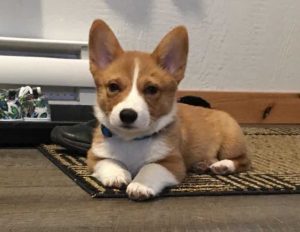
Red Don Corgis

Knottynuff's Cowboy Corgis Posts Facebook

Pembroke Welsh Corgi Puppy for Sale Adoption Rescue for Sale in

AKC Pembroke Corgi Puppies for Sale in Alamogordo New Mexico
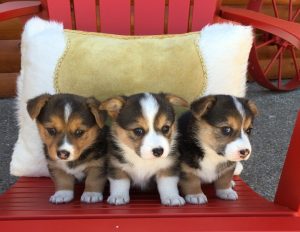
Red Don Corgis

Red Deer Corgi Dogs Puppies for Sale Classifieds at eClassifieds 16U
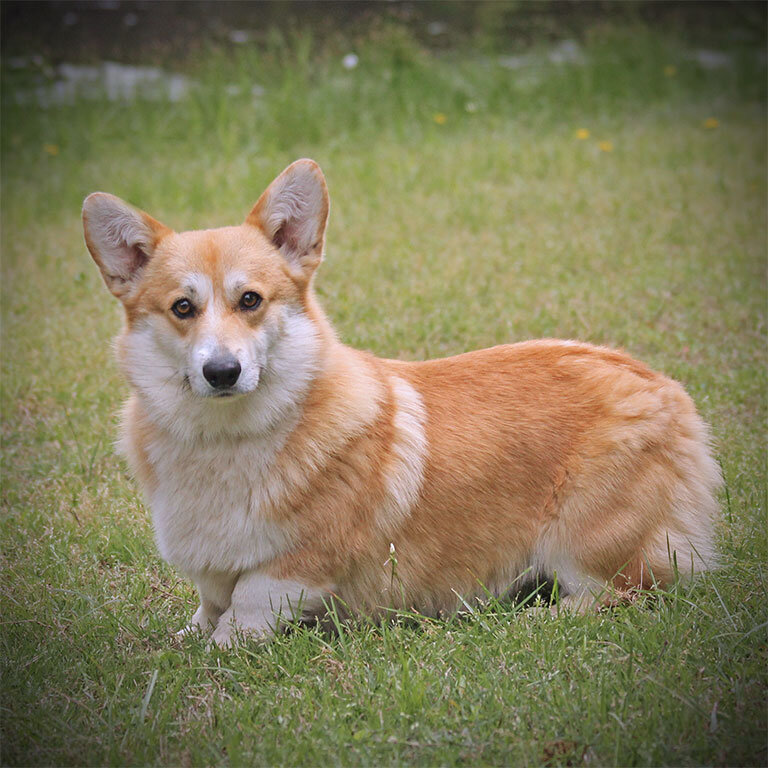
Our BoysStuds Hill Country Corgis
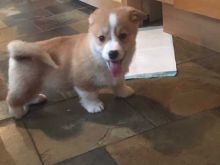
Fort McMurray Corgi Dogs Puppies for Sale Classifieds at
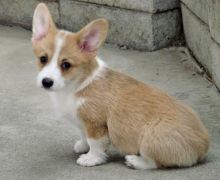
Red Deer Corgi Dogs Puppies for Sale Classifieds at eClassifieds 16U
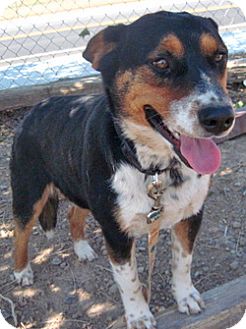
Alamogordo NM Corgi Meet Barnie a Pet for Adoption

AKC Corgi Puppies for Sale in Alamogordo New Mexico Classified

Knottynuff's Cowboy Corgis Posts Facebook

Fort McMurray Corgi Dogs Puppies for Sale Classifieds at

Litter of 16 Border Collie puppies for sale in ALAMOGORDO NM